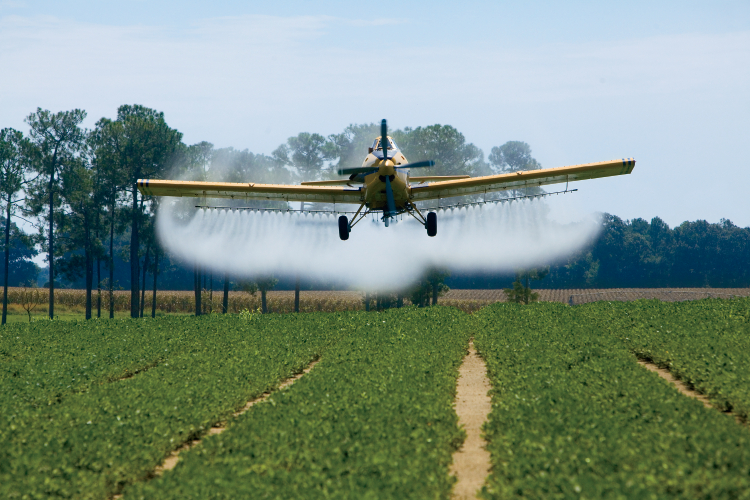Home > Georgia > Georgia Crops & Livestock > Georgia Farming in Flight
Georgia Farming in Flight
Agricultural advances and cutting-edge technologies are taking off for Georgia farmers – literally.
Agricultural aviation, also known as crop dusting, has become one of the safest, fastest and most efficient ways for row crop farmers to apply pesticides and monitor crops, says Eric Rojeck, vice president of Thrush Aircraft in Albany.
“An airplane can accomplish more in one hour than ground equipment can in one day,” Rojeck says. “This means lessfuel used, less air pollution and no soil compaction.”
Those aren’t the only benefits of using agricultural aircraft. When a crop canopy is too thick for a ground rig, which could be the case in some orchards, airplanes are used for spraying pesticides that can reach the crop. If a crop is threatened by pests or disease, the amount of time for recovering the crop is critical, and aviation can take care of a problem much more quickly than ground equipment. Agricultural aircraft fly over almost every major crop in the Peach State, including cotton, peanuts, soybeans, corn and pecans.
Along with increasing efficiency for farmers, agricultural aviation is paving the way for modern farming technology. Pilots fly both helicopters and fixed-wing aircraft equipped with precision technology like Global Positioning Systems, geographical information systems, flow controls, real time meteorological systems and precisely calibrated spray equipment to ensure accurate application.
Rojeck says that although they haven’t currently made much headway in Georgia agriculture, unmanned aircraft are being marketed for field surveillance, using visible light and infrared cameras that help look at field and crop conditions.
Bo Warren, director of business development for the Georgia Department of Agriculture, says unmanned aviation is the next level for precision agriculture.
“Scientists have already demonstrated how remote battery-operated helicopters and unmanned aircraft can use digital imagery to monitor crop disease, water and nutrient conditions,” he says. “We are fortunate to see how producers can apply these new advances in technology on their farm.”




